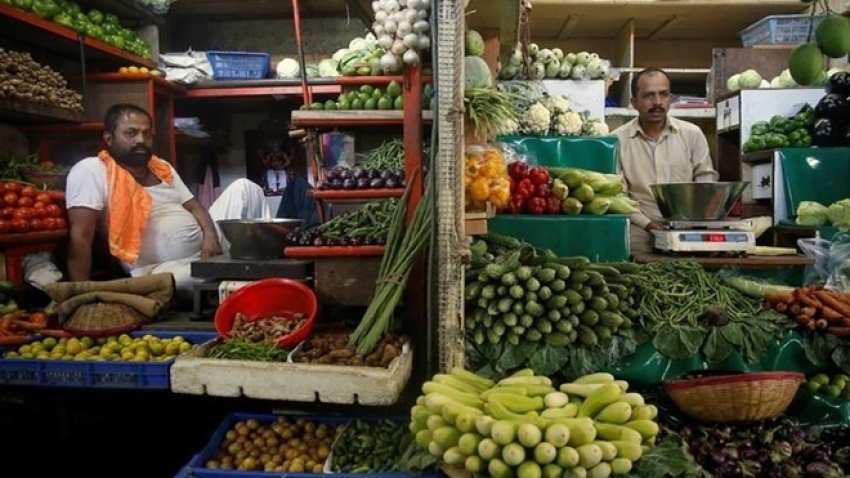Cost of food imports a growing burden for poorest countries, warns UN
The global food import bill is likely to rise by around 3 per cent to about $1.47 trillion this year, driven chiefly by greater international trade in fish, notably seafood - costly foods mostly imported by developed countries - and cereals, a staple that is an essential import for many poor countries, the report said.

The cost of importing food is weighing increasingly heavily on the world`s poorest countries, a United Nations Food and Agriculture Organisation report issued on Tuesday showed. The food import bill has risen fivefold since 2000 for countries that are the most vulnerable to food shortages, while it has roughly tripled globally to reach $1.43 trillion in 2017 and is set to rise again this year, according to FAO`s Food Outlook report.
"This shows a trend that has been deteriorating over time, portending an increasing challenge, especially for the poorest countries, to meet their basic food needs from international markets," said Adam Prakash, a FAO economist and author of the study in the report.
The global food import bill is likely to rise by around 3 per cent to about $1.47 trillion this year, driven chiefly by greater international trade in fish, notably seafood - costly foods mostly imported by developed countries - and cereals, a staple that is an essential import for many poor countries, the report said.
The food import bill now accounts for 28 per cent of all merchandise export earnings for the group of least-developed countries - almost double the share of 2005. This compares with some 10 per cent of export earnings spent on food imports by developed countries, which also have higher GDP per capita, FAO noted.
Food imports have risen at an annual global average rate of 8 pe rcent since 2000, but has been in the double-digits for the vast majority of the poorest countries. And the share of cereals imported compared to higher-value foods has not fallen in poorer countries, in stark contrast to wealthier ones, where it has dipped sharply, FAO said.
The new issue of the twice-yearly Food Outlook also contains a special chapter on the growing trade in minor tropical fruits such as guava and lychees.
"Strong worldwide urbanisation trends and growing health awareness" as well and "robust wholesale prices" in developed countries point to ample commercial potential for minor tropical fruit exporters in low-income countries, according to FAO.
The global output value of these fruits - 86 per cent of which are produced in Asia - was around $20 billion last year, it said.
However, capitalising on this trade opportunity for poorer countries will take innovation in handling perishability, assurance of supply, price volatility and compliance with phytosanitary certification requirements, the UN agency said.
Only around 10 per cent of minor tropic fruits production is currently traded across borders, mostly within Asia - with Thailand a major exporter. Guava is the largest fruit in this category, along with jackfruit, longan, lychee, durian, rambutan and passion fruit, mostly grown in Brazil, and mangosteen, said FAO.
Countries may indeed be "paying more for less food," even though global production and trading conditions have been quite benign in recent years, according to the report.
WATCH ZEE BUSINESS VIDEO HERE
"While food markets have remained relatively stable thanks to generally good supply conditions across most categories, they remain vulnerable in light of recent rising trade disputes and the potential for weather and other shocks," the report warned.
In the cereals sector, 2018/19 trade is expected to remain robust, supported by continued strong import demand for nearly all major cereals.
Other highlights include expectations of "elevated" and even record prices for seafood products in the second half this year due to tight supply trends; expanding trade for dairy products, especially milk powders; and a robust expansion of meat production amid decelerating growth in trade volumes, said the report.
The Food Outlook primarily reviews market trends for the world`s major food commodities, including cereals, fish, meat, dairy, sugar and vegetable oils. Its analysis focuses on food import bills` composition - animal proteins, fruits and vegetables, cereals, beverages, oilseeds and coffee, tea and spices - and trends over time.
Get Latest Business News, Stock Market Updates and Videos; Check your tax outgo through Income Tax Calculator and save money through our Personal Finance coverage. Check Business Breaking News Live on Zee Business Twitter and Facebook. Subscribe on YouTube.
RECOMMENDED STORIES

SCSS vs FD: Which guaranteed return scheme will give you more quarterly income on Rs 20,00,000 investment?

Rs 3,500 Monthly SIP for 35 years vs Rs 35,000 Monthly SIP for 16 Years: Which can give you higher corpus in long term? See calculations

Power of Compounding: How long it will take to build Rs 5 crore corpus with Rs 5,000, Rs 10,000 and Rs 15,000 monthly investments?

Small SIP, Big Impact: Rs 1,111 monthly SIP for 40 years, Rs 11,111 for 20 years or Rs 22,222 for 10 years, which do you think works best?
08:22 AM IST










 International Day of the Girl Child 2022: Theme, history and significance
International Day of the Girl Child 2022: Theme, history and significance  Without comprehensive reforms, UN faces 'crisis of confidence': PM Modi
Without comprehensive reforms, UN faces 'crisis of confidence': PM Modi UNGA adopts COVID-responsive procedure for Security Council election
UNGA adopts COVID-responsive procedure for Security Council election ABB installs electric vehicle fast charger station at NITI Aayog
ABB installs electric vehicle fast charger station at NITI Aayog